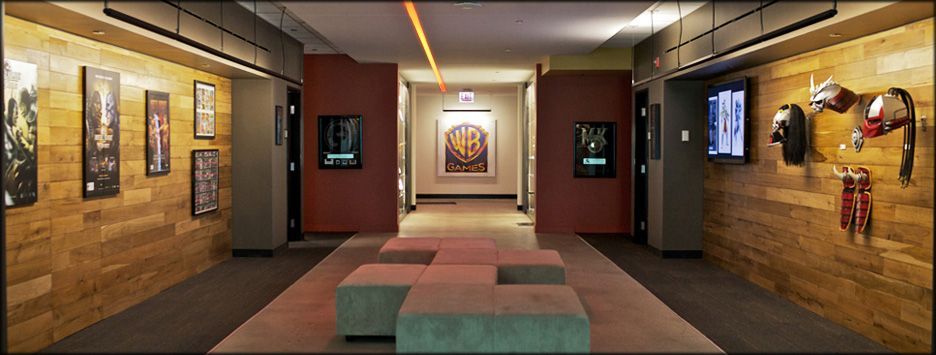
I remember the first time I played Mortal Kombat, or at least I vaguely recall its influence and how ahead of its time it seemed to be. I remember how real it looked and sounded. I remember having the fatality codes tucked in its Mega Drive case in a time before the internet.
But most of all, not really having any sense of what success and legacies were, I still remember that developer Midway’s merciless brawler was something special. Something groundbreaking that was changing the way we thought about video games. But I don’t remember ever thinking that we’d still be talking about Mortal Kombat and its creators as something relevant 25+ years down the line. Did any of us?
TIME FOR A REAL BLOODSPORT
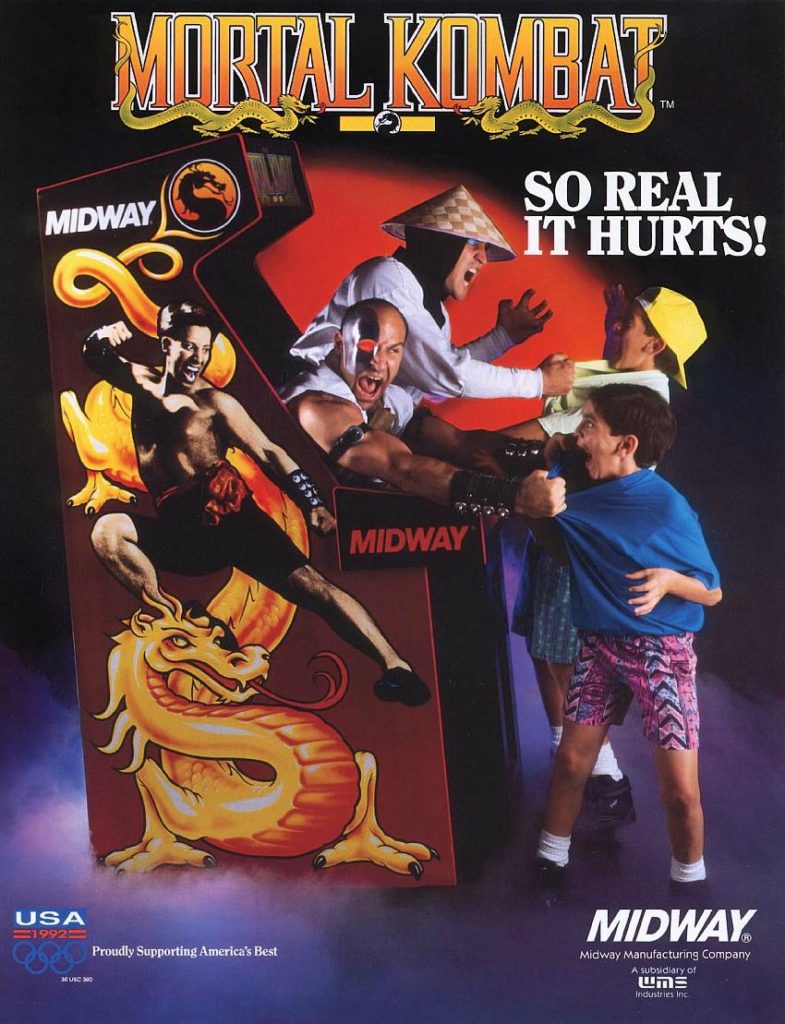
It was only by happenstance that Mortal Kombat ever came to be. The year was 1991. Ed Boon, a Chicago native with a predilection for video games had just completed a degree in computer science and was toiling away in Williams Entertainment’s pinball department, programming their machines. John Tobias, also from Chicago was harbouring an ambition to be a comic book artist until the evolution in video game technology piqued his interest, eventuating in a role at Williams. While Boon saw his role as a foot in the door, Tobias had just headed up the development of Smash TV for arcades and was working on its sequel Total Carnage. Boon was suddenly moving through the ranks and began to help out on a couple of minor football games. Tobias and Boon would cross paths this way and began to toss around ideas about a “game like Street Fighter but with realistic graphics and blood and a real storyline”.
After Midway Games was bought and merged with Williams Entertainment, the company tasked Boon and Tobias with developing a video game tie in for the successful Jean Claude Van Damme movie Bloodsport. Intended to be a quick project (only mere months in development) the game would see Van Damme’s likeness inserted into the final product. The two teamed up with John Vogel and Dan Forden and with only a four man team got to work. When Van Damme left the project to contribute to another game that never came to fruition, the licensing deal fell through and Boon, Tobias, Vogel and Forden were left with a substantial amount of work that for all intents and purposes would have been relegated to digital scrap. Undeterred, they began development on their own brawler, the one Boon and Tobias had all but left behind after their sole conversation on the matter. Indeed, their unadulterated 2D fighter would rival the more cartoony aesthetic of Capcom’s Street Fighter II, which itself had reigned supreme in arcades for over a year. Mortal Kombat was born and released onto an unsuspecting public in 1992 in arcades the world over.

Mortal Kombat eschewed the conventional formula of fighting games. Billed as something more gritty and placing an emphasis on over the top violence, Boon – by his own admission – knows that their ‘little game that could’ would never have reached such a height of popularity had it not been for its gratuitous violence. While you won’t find a a lot people that would disagree, MK did become a seminal game within the genre, not only for its fluid movement but also its juggling combos which inspired a legion of games to emulate it, including Tekken which would eventually allow it to become a defining feature.
Although its roster was somewhat diminutive by today’s standards, MK boasted a diverse array of characters all of which were designed by Tobias. There was a Sub-Zero and Scorpion, members of two warring ninja factions, Liu Kang who was inspired by Bruce Lee, Raiden, the God of Thunder and Johnny Cage, a brash movie star who lampooned the whole Van Damme fiasco. What separated MK from its counterparts was its use of ‘digitised sprites’. In a nutshell, this meant that the creators captured real actor’s faces for the characters, giving them photo-realistic appearances.

This only meant that its combat…er..kombat, was that much more visceral. The team didn’t ignore the tried and true – one could still block, jump, attack with all their limbs and throw projectiles. On paper, maybe MK didn’t really stand out that much. But when it was played, its overwhelming sense of viciousness and bone crunching impact was worth every line that it garnered in arcades. Blood would fly after the most nondescript punch or kick, characters would scream in agony and the screen would shake. And this is all before the game’s coup de grâce. Fatalities are as synonymous with Mortal Kombat as pipes and coins are with Super Mario. Inciting a fervent backlash, players could eviscerate their opponents by ripping their spines out, decapitating them with a punch and burning them to a crisp, among others. It was unprecedented and it was working. Due to the games relative obscurity, MK’s cabinets were unobstructed, displaying its easily accessible shock imagery that wowed teenagers across the globe and no amount of picketing or sternly written letters could do anything about it. People wanted more.
So in 1992 Acclaim (who handled the ports) launched their ‘Mortal Monday’ campaign which signified the impending release of Mortal Kombat on home consoles – Nintendo’s SNES and Gameboy and Sega’s Genesis and Game Gear. Although the SNES’ visuals were crisper, Nintendo’s commitment to maintaining their family friendly moniker eventually betrayed them. When Mortal Kombat hit the home market, Nintendo would eliminate all signs of blood, even toning down fatalities to the point where the gimmick became superfluous. This omission turned the tide of the console wars heavily in Sega’s favour as they were hell bent on providing an edgier, less regulated experience for gamers.
Midway and anyone involved would be foolish to think that a game so extremely graphic wouldn’t be the source of a healthy amount of controversy. Along with the poorly made Night Trap (a product of Sega’s ill conceived idea that ‘Full Motion Video’ games would be the next big thing), Mortal Kombat was the game that galvanised the ESRB rating system.
MK would continue to draw the ire of parents and politicians alike with each new entry but ultimately it didn’t matter. Acclaim announced in November 1993 that they had shipped 3 million units of Mortal Kombat. Gamer’s had suddenly found their new love.
TOASTY SEQUELS
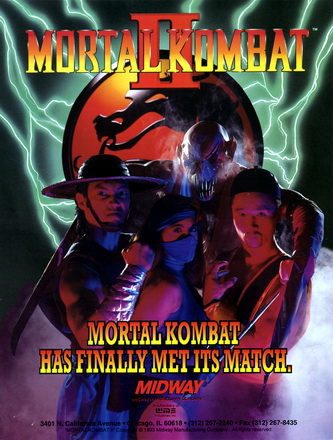
It’s funny. Boon and Tobias hadn’t even considered the idea of a sequel. They had toyed with the idea of a Star Wars game until someone, in so many words asked them if they were crazy and that they had to make another Mortal Kombat game to capitalise on the success of the first. With MK’s home console release still flying off the shelves, Boon and Tobias set to work on Mortal Kombat II.
Boon has stated that they wanted to do things in the sequel that they couldn’t do in the first. In 1993 the sequel hit arcades followed by a home console release with an increased number of fighters, each of whom had gained a bonus fatality. In addition, and as a sarcastic counter-attack to censorship, the team would implement Babalities and Friendship Finishers. Boon and co. knew that they were going to come under fire again so they got out ahead of it, letting the world know that they didn’t care and they weren’t going to dilute their product.
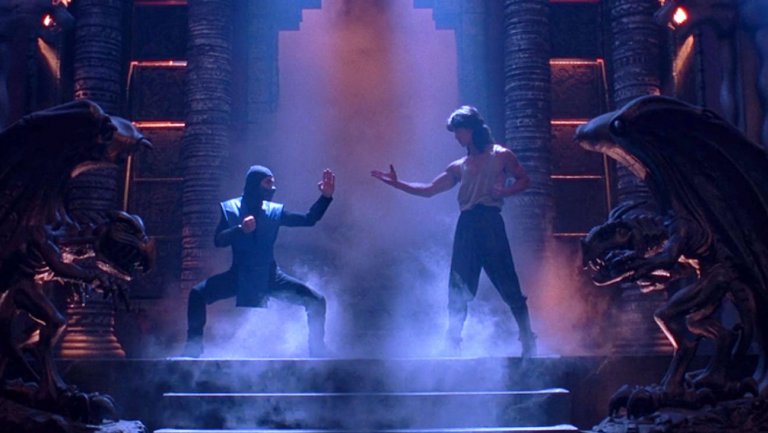
Proving that lightning can indeed strike twice, Mortal Kombat II made up much of Williams Entertainment’s revenue with MK cabinets and when the game hit the home market (this time Nintendo wised up and let the game go uncensored), on ‘Mortal Friday’, MKII made $50 million in its first week and became the best selling game in history at the time. Mortal Kombat was but an appetiser. Now the world had MK fever and if the financial return of the sequel wasn’t enough to cement it, the merchandise and marketing frenzy did. Characters were plastered on everything from lunch boxes to t-shirts, the series spawned multiple comic runs and two movies. Boon and Tobias hadn’t thought much of their gory little game in 1992 but now they had no choice but to ride the wave.
Over the course of the next 15 years, the team at Midway grew and so did the ambition and scope of their numerous sequels. They saw out the 90s’ in classic style – Mortal Kombat 3 (1995), Mortal Kombat 4 (1997, the last iteration to appear in arcades). They even reinvented themselves and with 3D gameplay and a bonus RPG-lite mode called Konquest – Deadly Alliance (2002); Deception (2004). In Armageddon (2006) you could create custom fighters and fatalities. And occasionally they tried their hand at action-adventure spin-offs. Some made ‘worst games ever made’ lists such as Mortal Kombat Mythologies: Sub-Zero (1997) and Mortal Kombat: Special Forces (2000) and some were praised like Mortal Kombat: Shaolin Monks (2005).
No matter what Midway did, the Mortal Kombat franchise continued to thrive, transcending decades, easily transitioning shifts in mediums and surviving competition in not only the genre but in the shock stakes. And yet, its spark had diminished, it wasn’t ‘hot’ anymore. Tobias had left in 1999 after perceiving a irrevocable decline in the series and audiences echoed his departure with a desire for change. They wanted something fresh. Little did they know that they were about to get it.
THE FALL OF MIDWAY AND THE RISE OF NETHERREALM
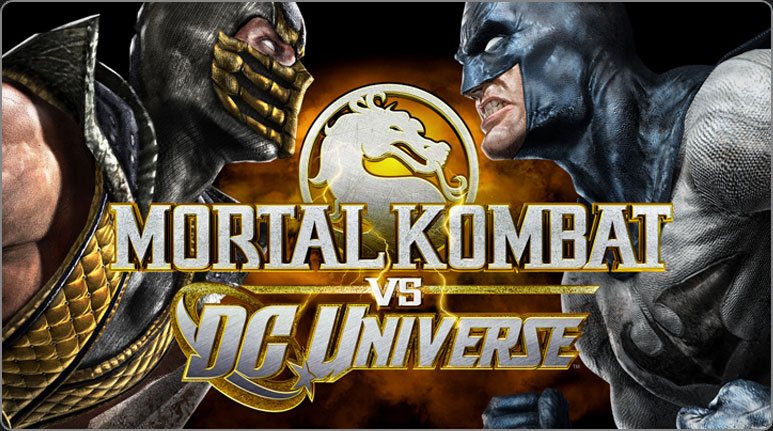
It certainly was an unusual forebearer. In 2007, while Midway were devising their next Mortal Kombat game, they struck a deal with DC Comics that would eventually result in a crossover. In 2008, the game, simply titled Mortal Kombat vs DC Universe, saw the two franchises lock horns in what turned out to be a pretty underwhelming game. This however was irrelevant; MK vs DC was hugely successful, at the time becoming the most pre-ordered Mortal Kombat title ever. Behind the scenes though there had been some irreparable damage caused that even the meeting of two iconic products couldn’t fix. By the end of 2008, Midway had lost millions and their CEO David Zucker had bailed out of the drivers seat while the company sped toward a yawning chasm. Amidst a whirlwind of law suits, Midway, who helped revive and shape gaming in the 90s’ was relegated to living in someone else pocket. So at the beginning of 2009, they filed for bankruptcy.
Warner Bros who now had a more informed eye on Midway, put in a bid to purchase the injured company’s assets and by July had bought them out. Come October, the once venerable Midway Games was all but history. It was sombre. The reputable company had filled arcades with NBA Jam and Mortal Kombat cabinets and flourished in the home market thanks to their Blitz games and reliable ports. But while many of Midway’s former titles seemed to fall by the wayside, Warner Bros were not blind to what a cash cow Mortal Kombat was. Following the acquisition, Midway Studios in Chicago, Illinois (the original Midway Studio) was temporarily dubbed Warner Bros Chicago. But this was the house that Mortal Kombat built god dammit and it wasn’t long before it became NetherRealm Studios – a direct reference to one of the nine realms in the game that made the team a household name.
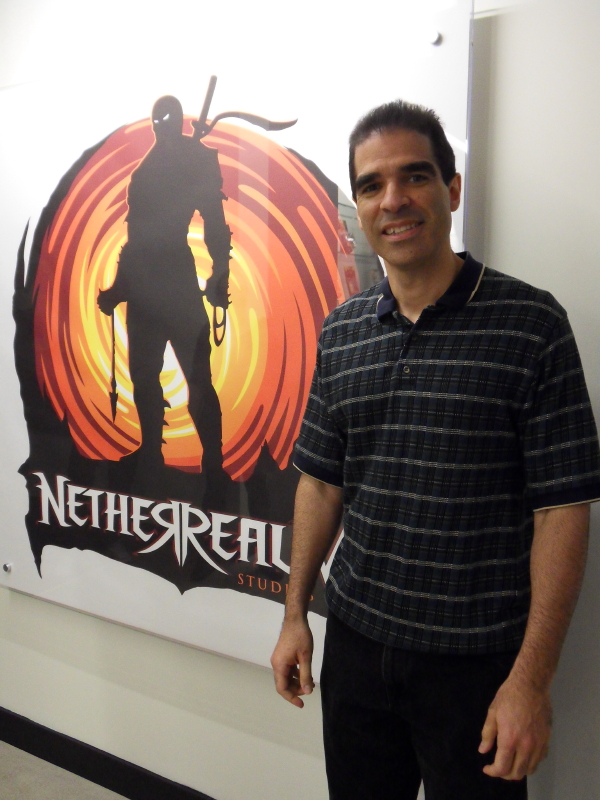
With a new name and mission statement, NetherRealm started development on their first game since Midway perished. It may have been a symbolic move reflecting their real life journey – or maybe NetherRealm were just making the game the had intended to make before the DC Comics deal – when the team made the decision to reboot the series.
With that came a new direction and it was obvious in Boon’s interviews and promotional talks that he had rediscovered a light. It was this re-invigoration that would lead him and his team to create a back to basics Mortal Kombat. MK9 would return players to the setting of the first three games, it would cut back on the fancy additions and it would focus on brutal fights (including the incredible X-Ray moves) and wildly creative, absurdly vile fatalities. They were so bad that they got the game banned in Australia until we finally received an R18+ rating and the ban was lifted. This focus and re-calibrated sense of love and devotion would earn them critical acclaim and nods of approval from MK fans who were itching to play something fresh while still being cradled by the familiar arms of nostalgia.
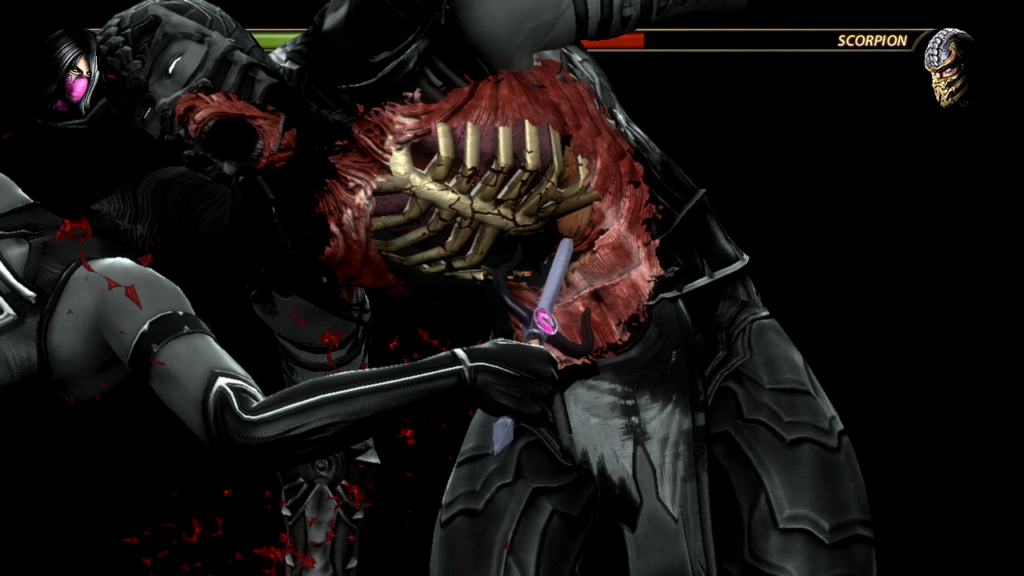
STRAYING FROM THE NORM
Although NetherRealm (and the team at Midway) have had their heart and soul in the Mortal Kombat mythos for the better part of three decades, they have ventured into other terrain. Notably, Injustice: Gods Among Us. Following the teams acceptable handling of DC fighting games, they chose to disembark their flag ship enterprise in 2013 and try their hand in the realm of comic book lore.
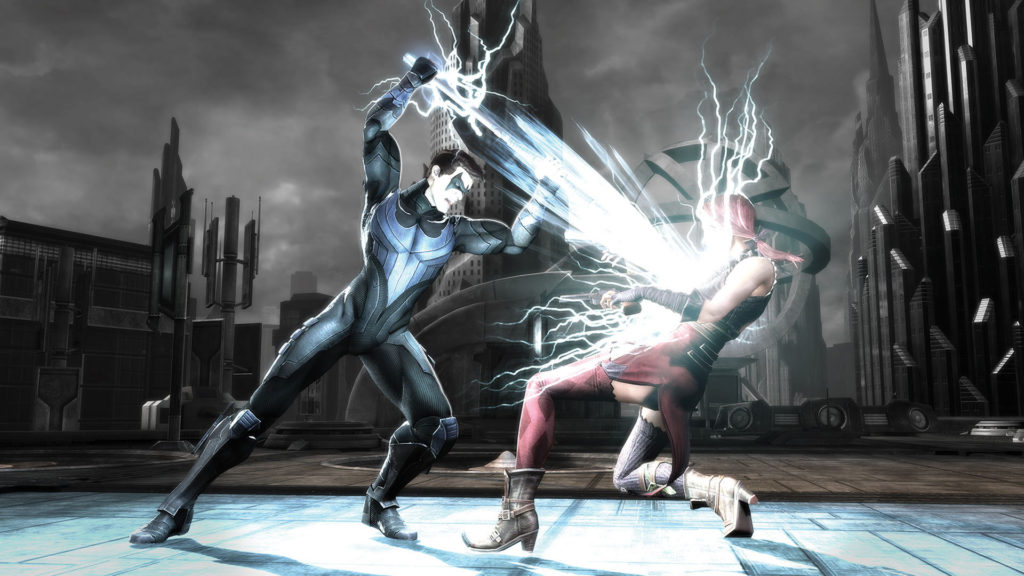
Producer Hector Sanchez said that the team “didn’t feel constrained by the parameters of the Mortal Kombat series”. It was a bold statement but one that reflected the company’s new found confidence in the post-Midway era. And it payed off. Injustice was the highest selling game of the month and continued to stay in the top 10 best selling games for a further two months. It didn’t matter that DC’s strict kibosh on mutilated combatants was still in effect, even after MK vs DC Universe made their version of fatalities utterly laughable. This time NetherRealm were going for MK9 levels of insanity with Boon stating they were going to embrace their ‘Teen’ rating with “crazy, over-the-top action”. And so they did, and Injustice was an exceptional fighter with utterly ridiculous super moves and a clear and respectful sense of love for its source.
NetherRealm didn’t stray too far away from the well though. In 2015, they celebrated their 10th canonical iteration with the release of Mortal Kombat X. A beautiful looking game with some of the most gruesome fatalities to date, MKX is sometimes regarded as the best in the series. While the matter remains subjective, the takeaway is that NetherRealm seemed to be unstoppable. relying less on gimmicks but more on fundamentals and longevity.
THE UNDEFEATED STREAK CONTINUES
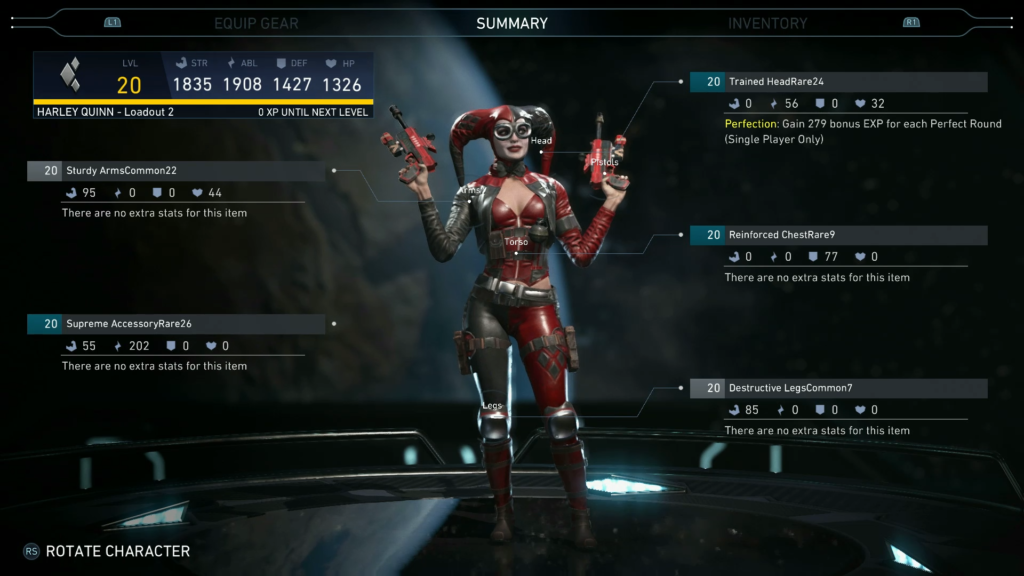
According to producer Adam Urbano, making a fighter with an RPG progression system was an idea that had been floating around the studio for some time. In May, 2017 NetherRealm finally put their gestating brain child into practice with Injustice 2. Now that Warner Bros had confidence in NetherRealm and NetherRealm respected the lineage of DC characters far too much to mock it, they were afforded more leniency in the development process. This worked hand in hand with the gear system because now players could customise their characters to their hearts content. It truly is a love letter to DC fans, encapsulating half a century worth of content from personal relationships, appearances, and references to storylines.
Not resting on their laurels however, NetherRealm churned out one of the most solid and wonderful looking fighters to date with robust mechanics and jaw-dropping facial animations. To that end, Injustice 2 released to rave reviews and sold better than its predecessor. And they’re not done there. Boon has remarked on how support for the game – including 9 DLC characters – will continue for quite some time.
They’ve weathered censorship issues, survived a crumbling Midway and managed to succeed outside of their comfort zone. Boon, Tobias, and the team at NetherRealm developed a gruesome little game that went on to become a pop culture sensation. And despite 25 years spent ripping the heads off of the same thunder gods and ninjas, they have shaken things up time and time again and resisted the urge to just phone it in. It may not be your cup of tea but there is something to be said for NetherRealm’s unyielding commitment in an ever changing industry. The glorification of violence has become almost a prerequisite in modern gaming, yet Mortal Kombat took the throne again with MKX. And the while the fighting genre has somewhat waned with the same group of guys rotating and having their turn the spotlight, NetherRealm consistently attempts to change the playing field, this time with Injustice 2’s inventive gear system.
Their last game has only just come out and the team is still focused on supporting it for at least the next year so no one really knows what the future holds for NetherRealm but at this point, can they really do any wrong? Will Mortal Kombat 11 change its dynamics again? Will Injustice 3 be even crazier? Will they attempt a hat trick and put their stamp on another franchise? Whatever it is, it’s going to be creative and impossible to look away from because if nothing else and after all this time, NetherRealm is a permanent and extremely reliable fixture in an industry full of emulators that could never quite get it done.
Mortal Kombat is in cinemas now.
This article was originally published in June 2017 and all information was correct at the time of printing.
